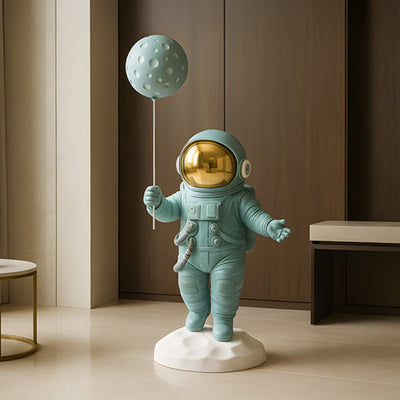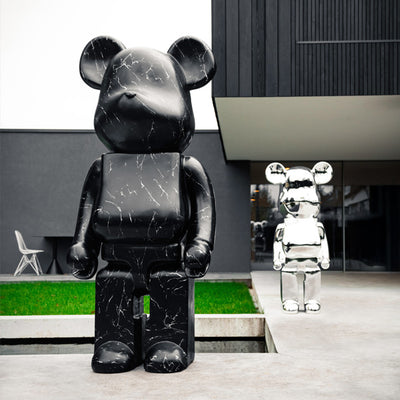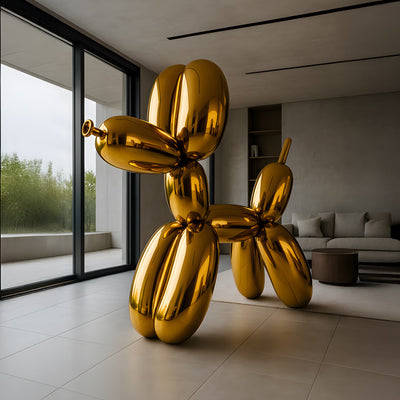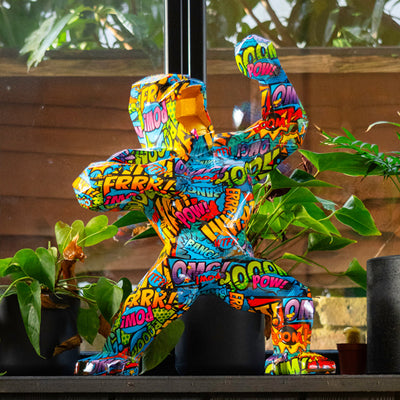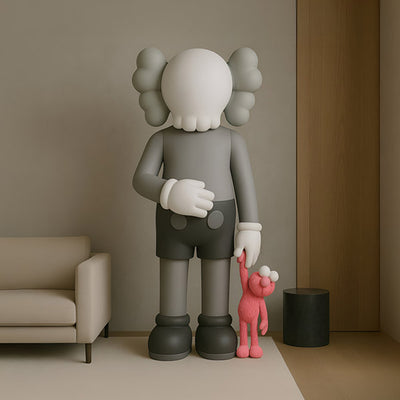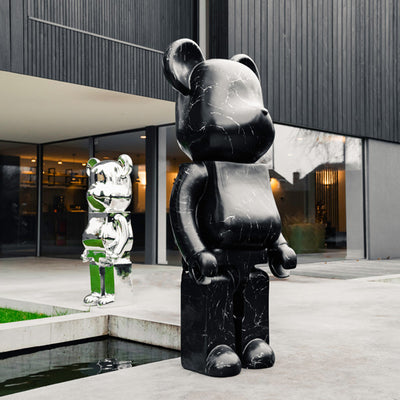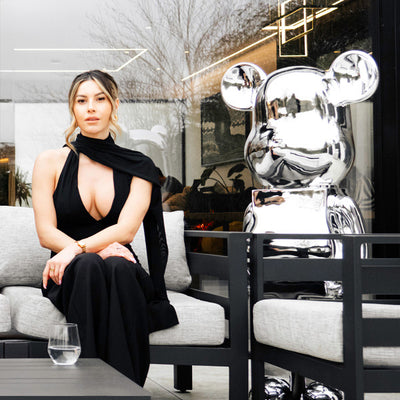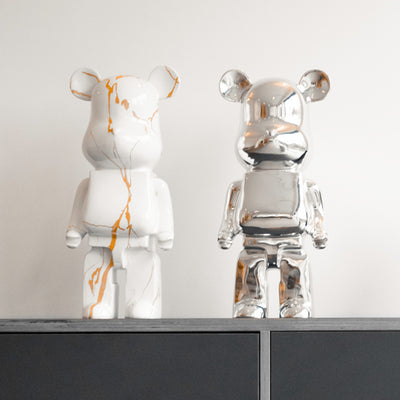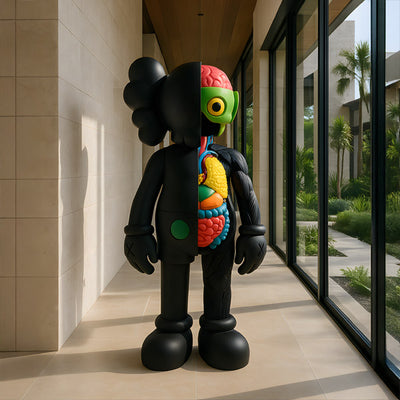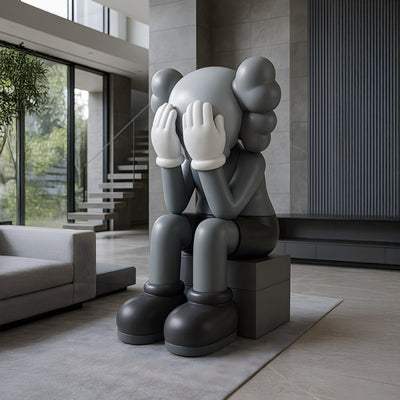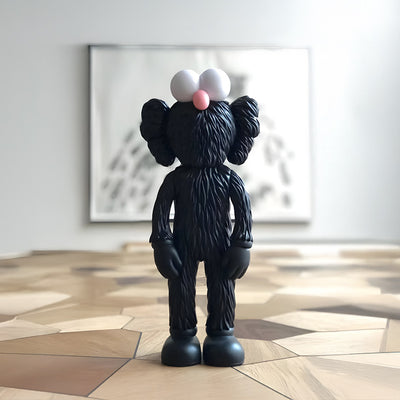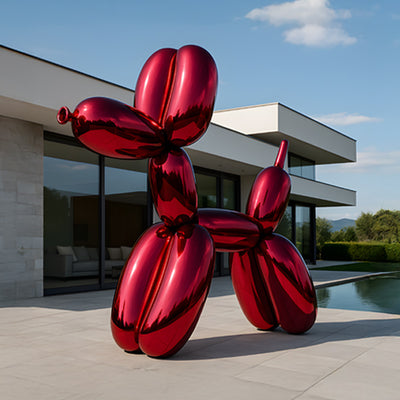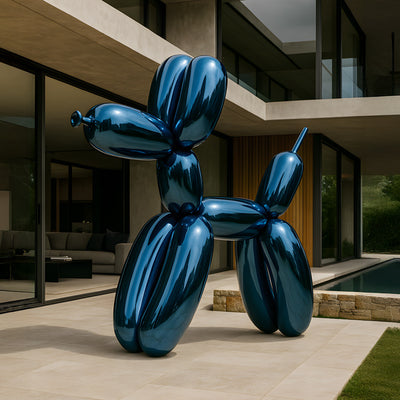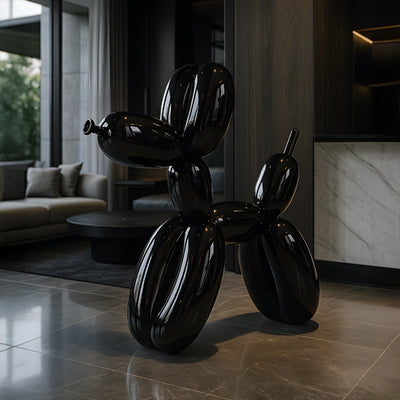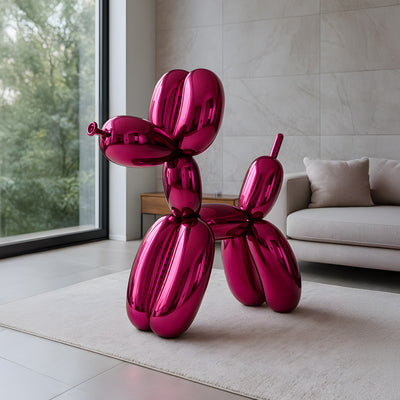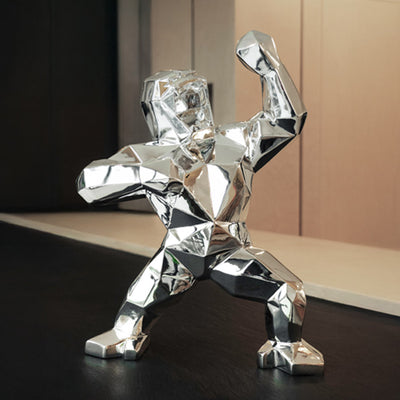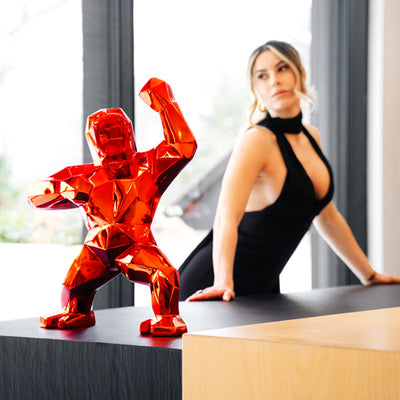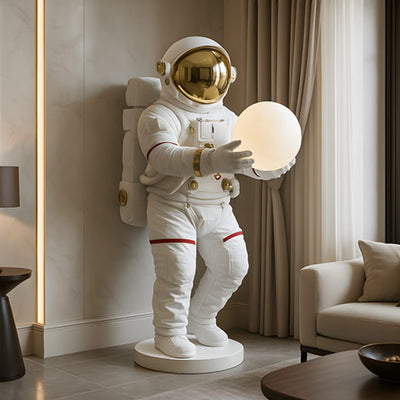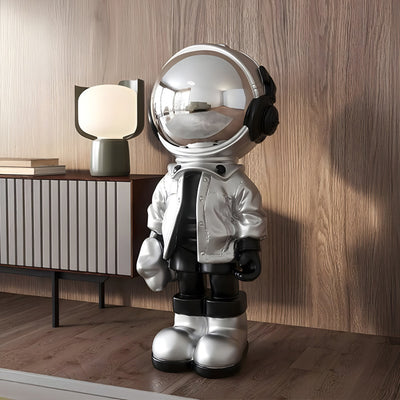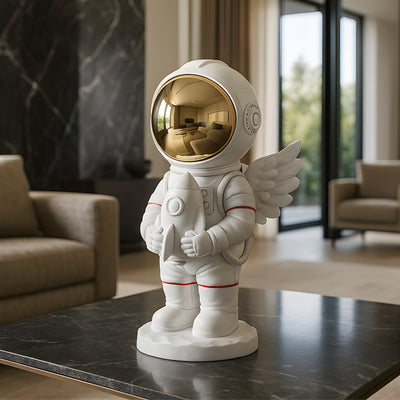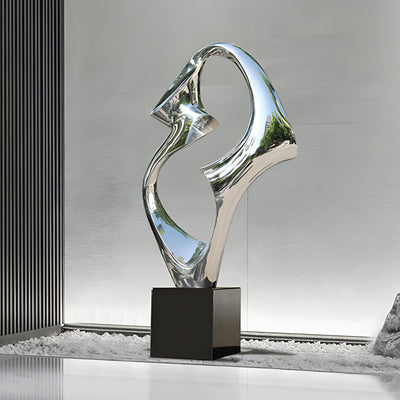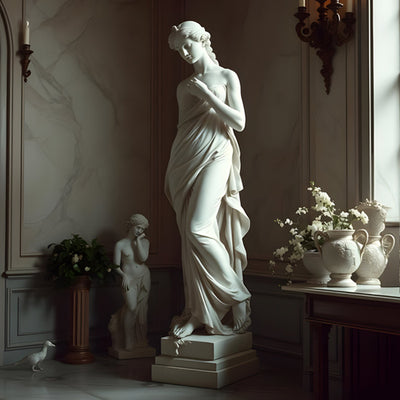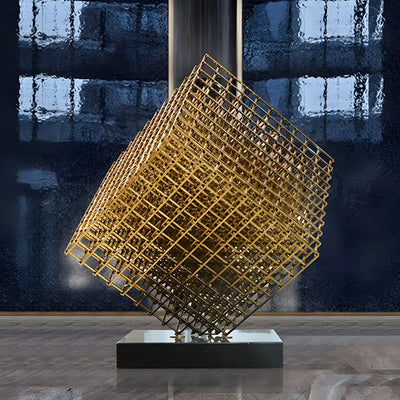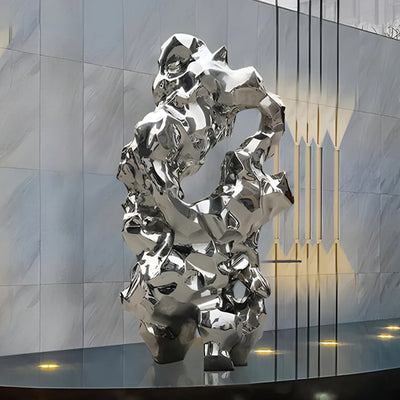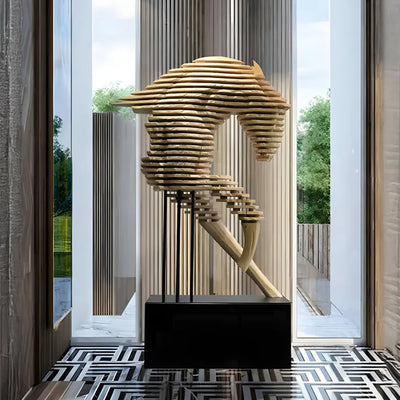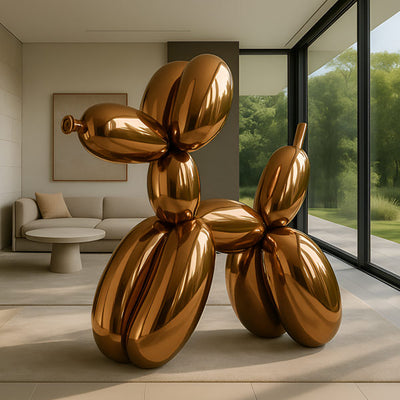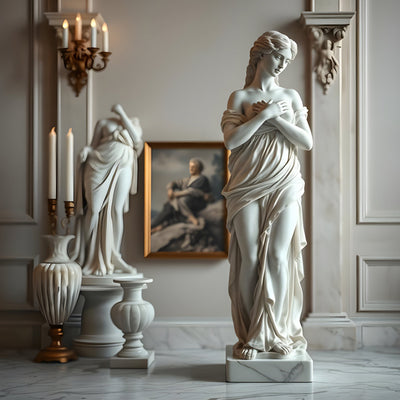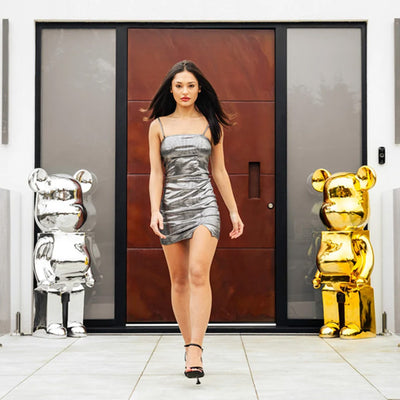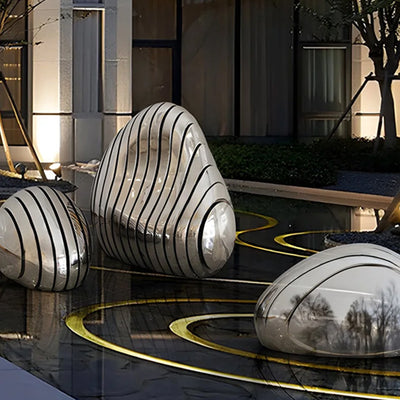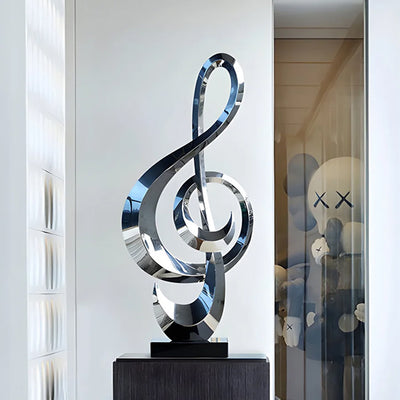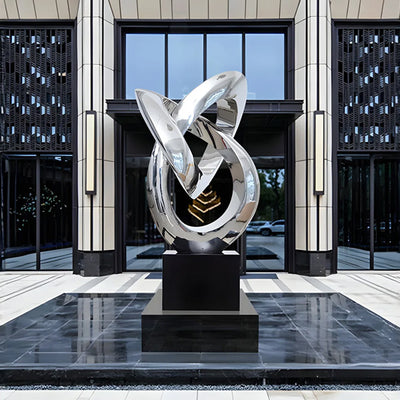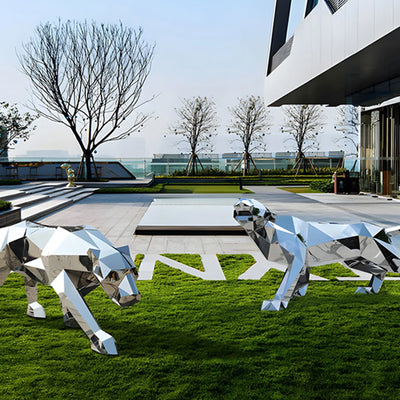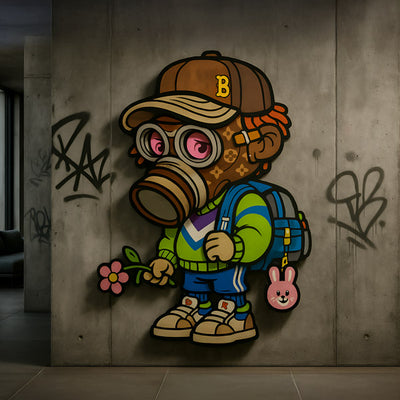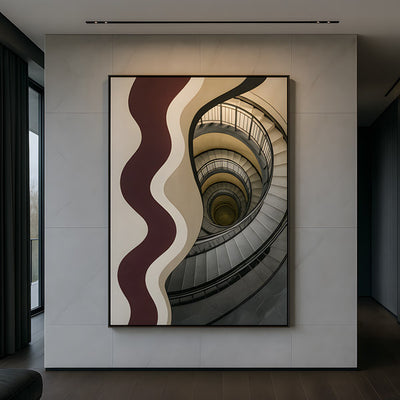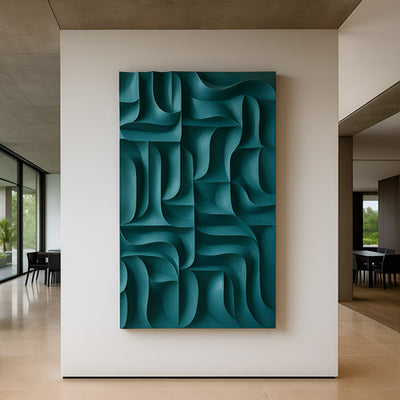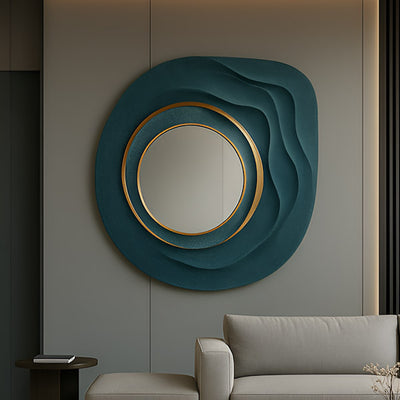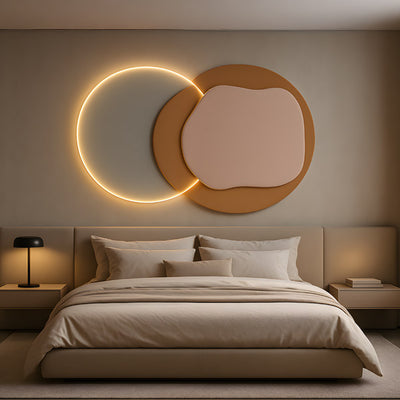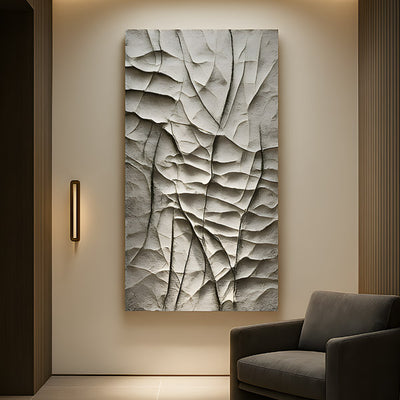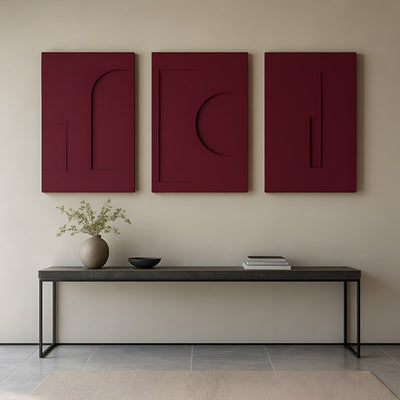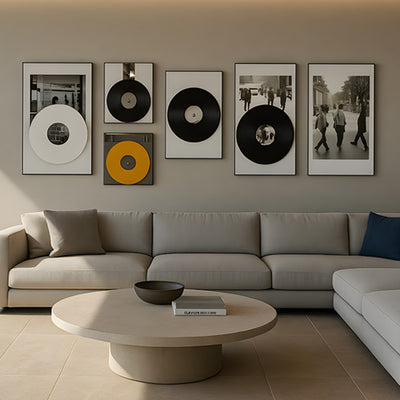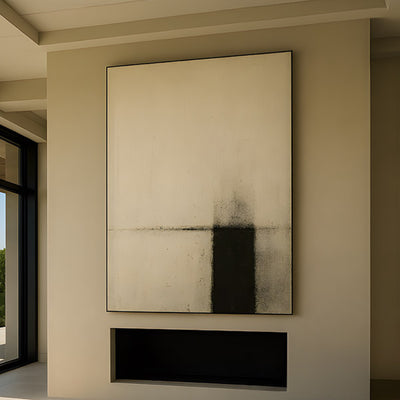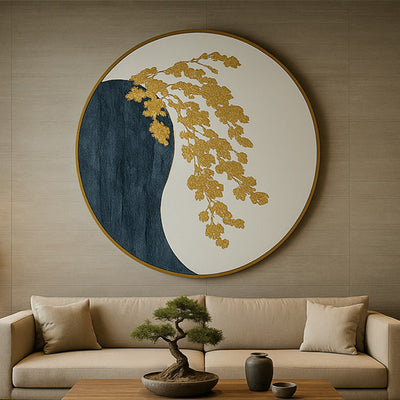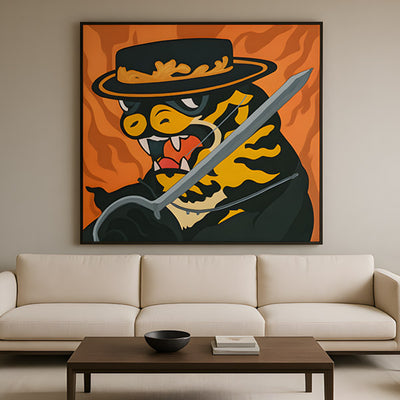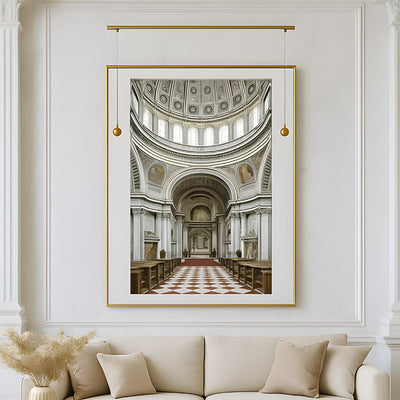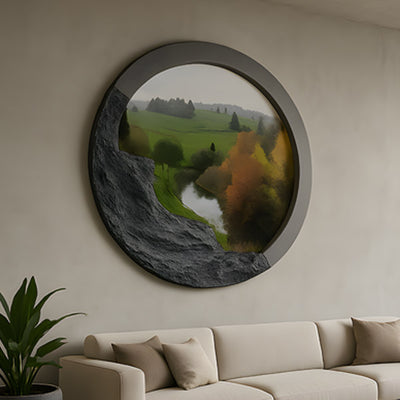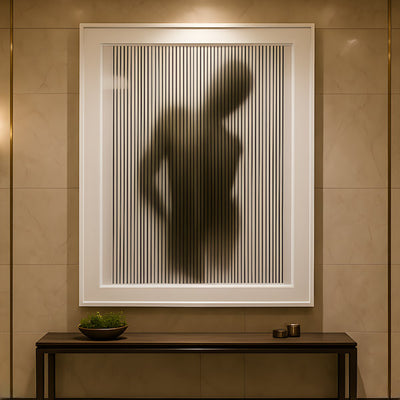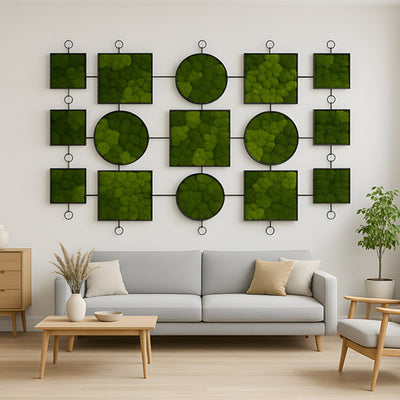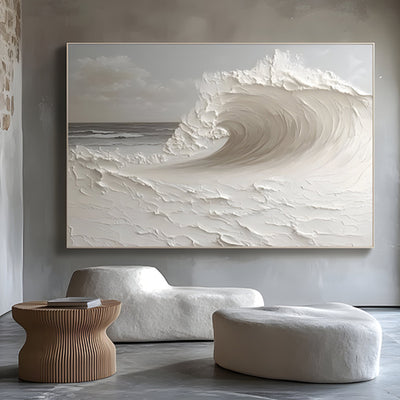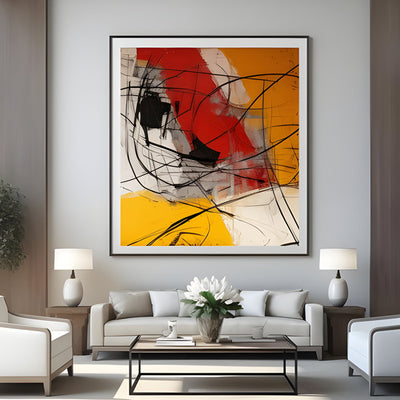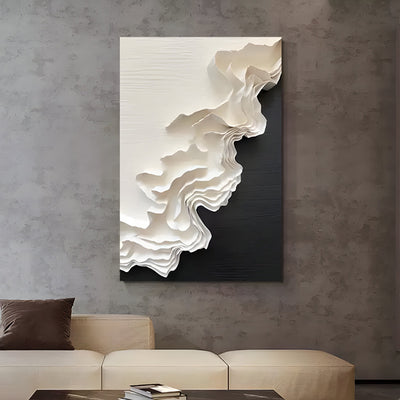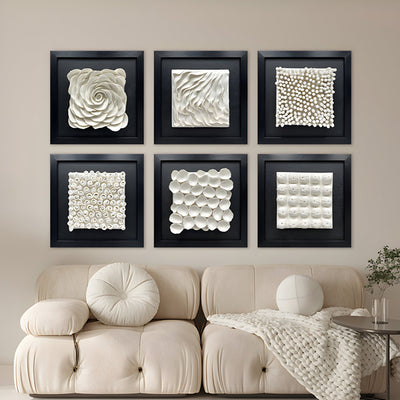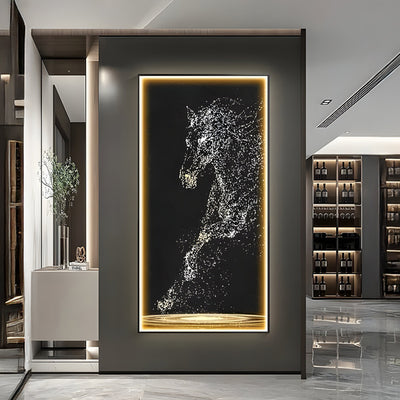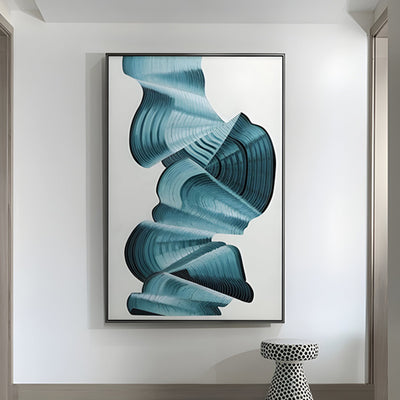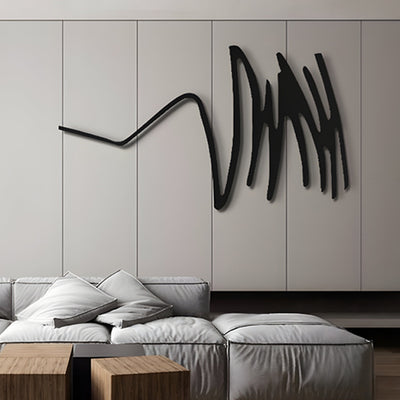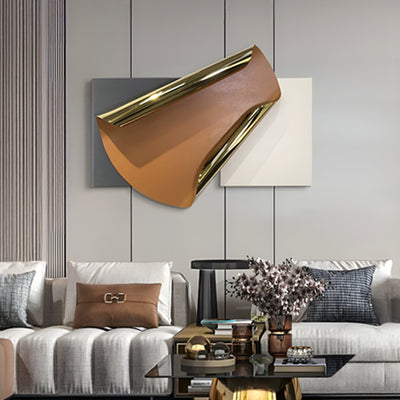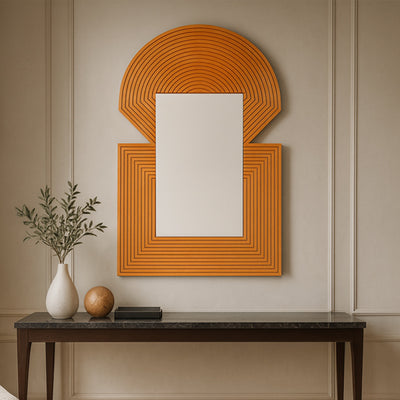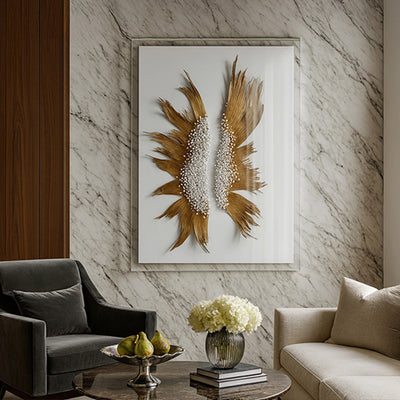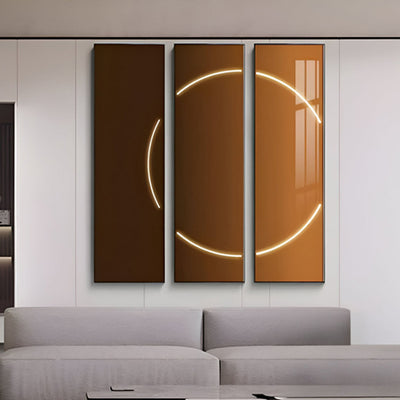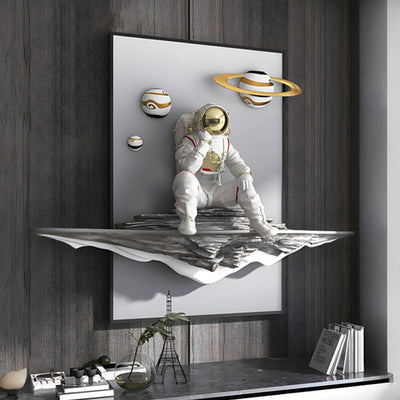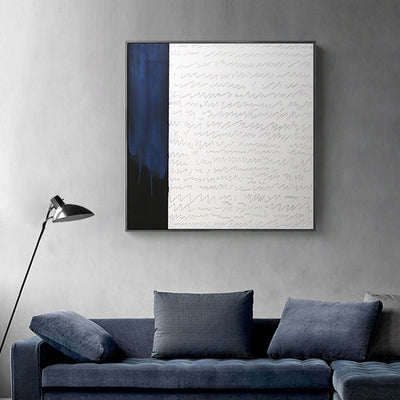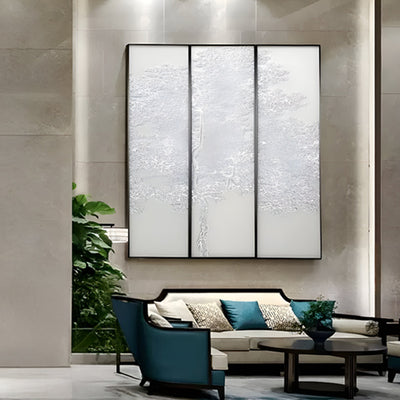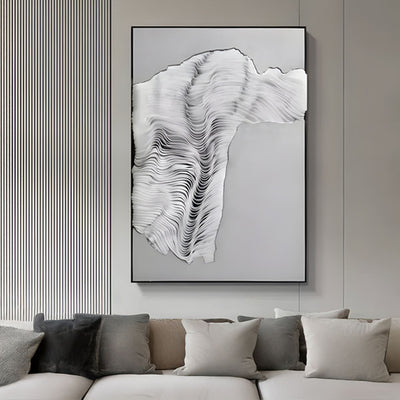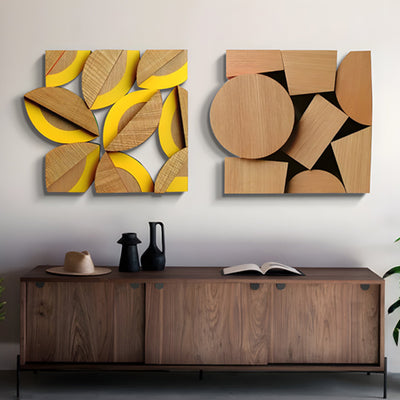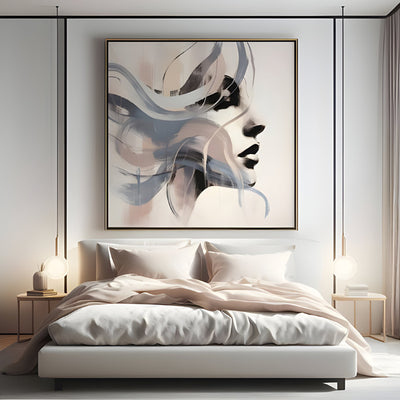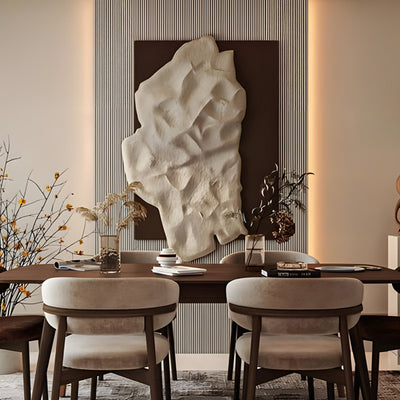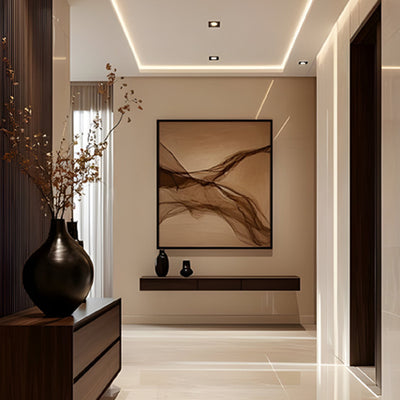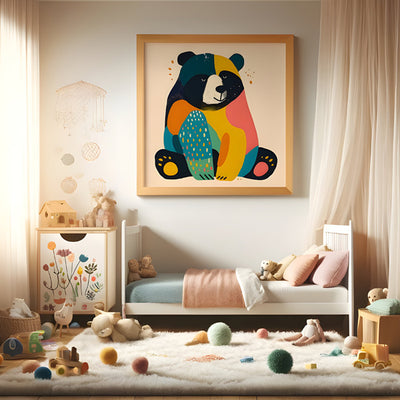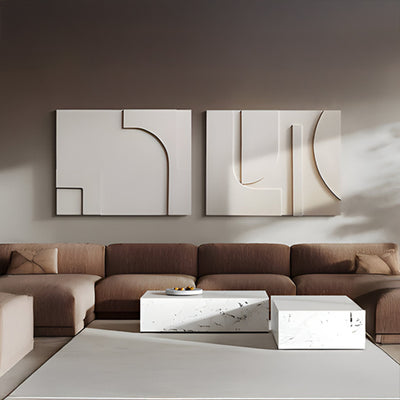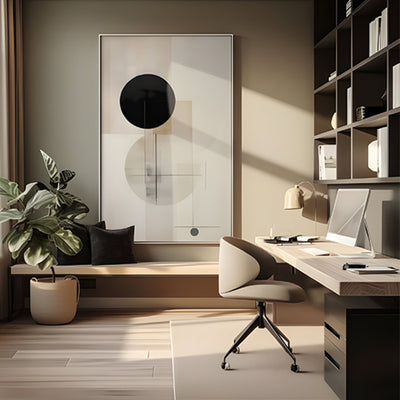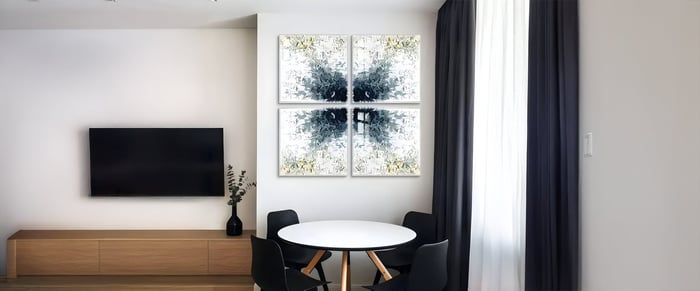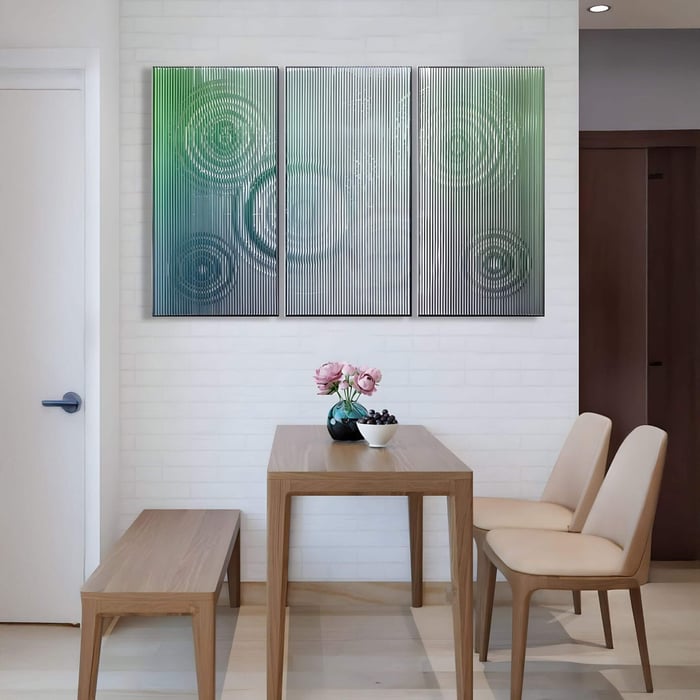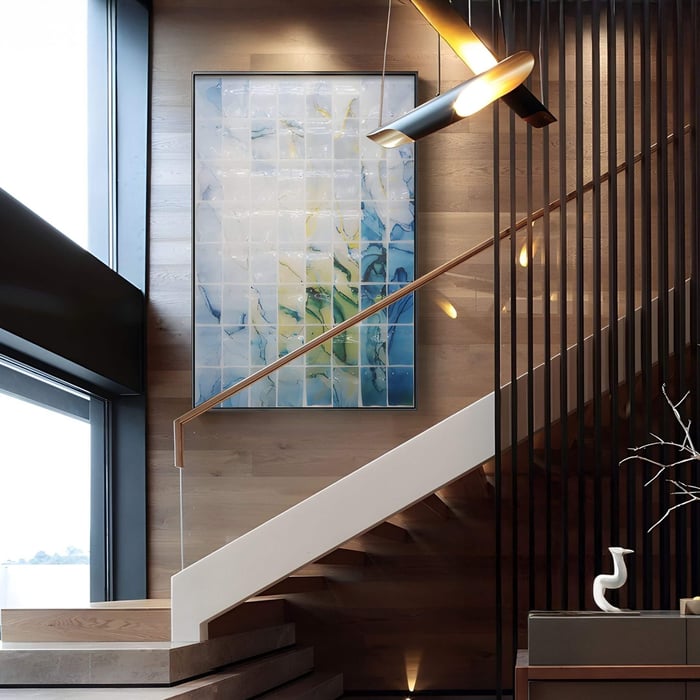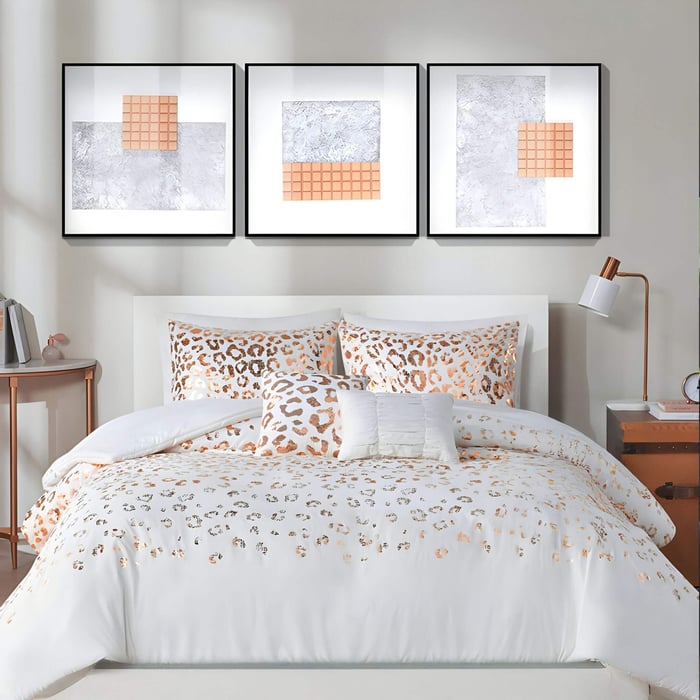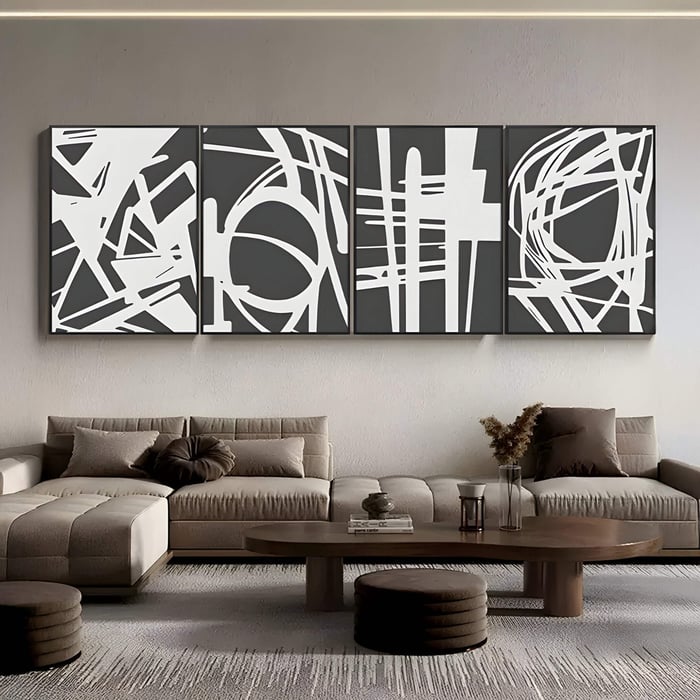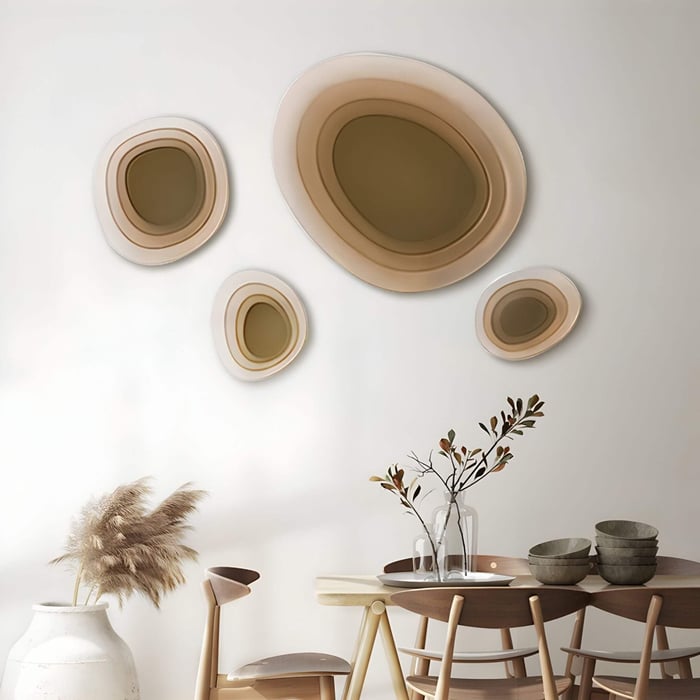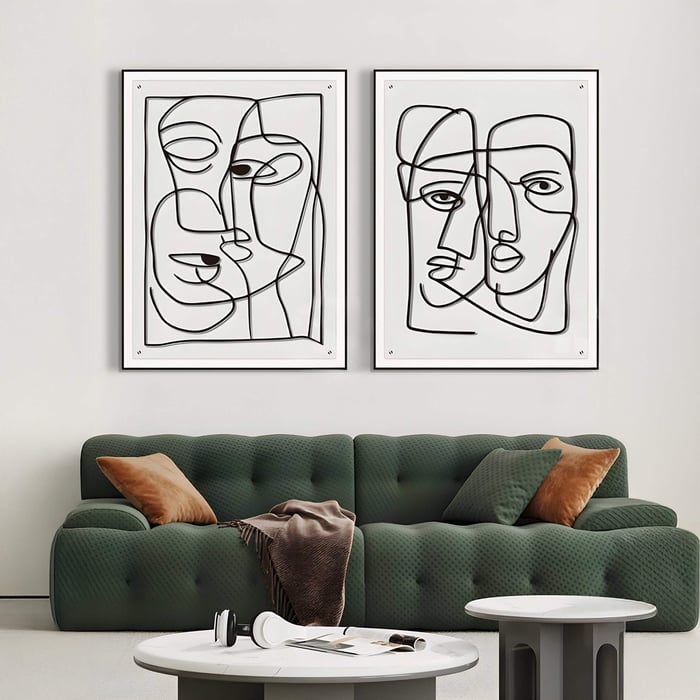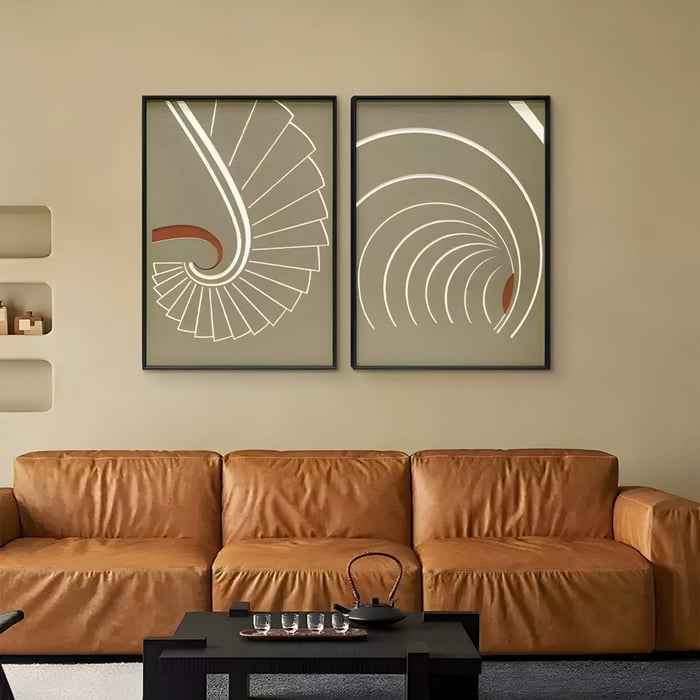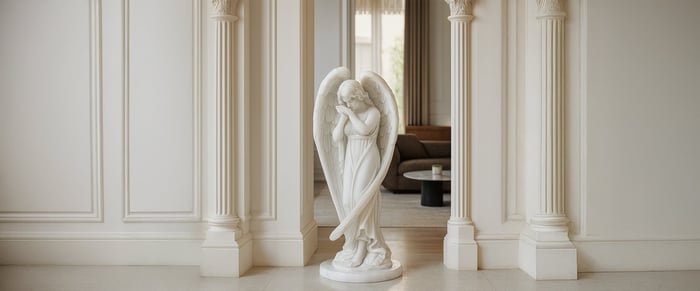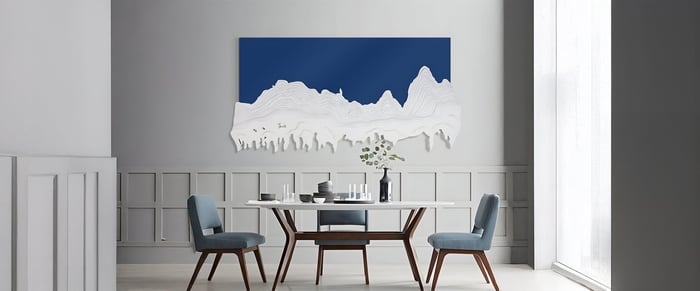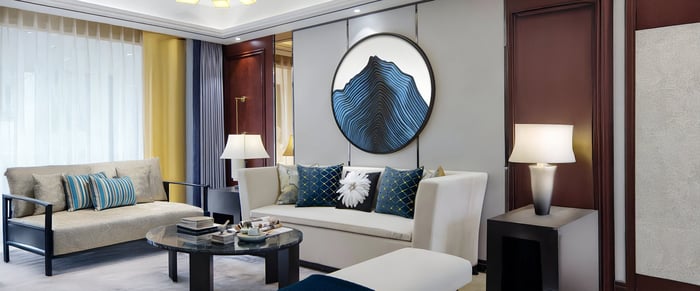Table of Contents
- Introduction - Why Abstract Art Walls Make a Statement
- Planning Your Abstract Art Wall: Space, Style & Vision
- Choosing the Right Pieces: What to Look for in Abstract Art Walls
- Layout & Composition Techniques: Arranging for Impact
- Frames, Finishes & Wall Treatments: Bringing It Together
- Hanging & Lighting: Precision & Reveal
- Common Mistakes to Avoid
- Conclusion - Curate with Confidence
- FAQs
Introduction - Why Abstract Art Walls Make a Statement
A blank wall can feel lifeless, but transform it with abstract artworks and suddenly it speaks volumes. Whether bold and geometric or subtle and organic, abstract art has a way of injecting emotion, colour, and intrigue into interiors. Unlike figurative art, which tells a literal story, abstract works allow interpretation, sparking conversation and energy in a space.
An abstract wall art takes this even further. Curated like a gallery, it becomes a composition in itself, showcasing multiple works that balance colour, texture, and scale. Done right, it elevates your home into something that feels intentional and deeply personal.
In this guide, we’ll explore how to plan your wall, choose the right pieces, arrange them for maximum impact, and finish with lighting and frames. Whether you’re starting fresh or refining an existing collection, these tips will help you curate like a professional.
Planning Your Abstract Art Wall: Space, Style & Vision
Before buying or hanging anything, it’s important to plan. Good preparation ensures your wall feels cohesive rather than chaotic.
Assessing Your Space
Size: Measure the wall and consider what percentage should be covered. A narrow wall might only need a single large painting, while a wide one can host a gallery wall of smaller works.
Lighting: Natural light enhances colours but can cause fading; artificial lighting lets you control focus and mood.
Surroundings: Think about nearby furniture and décor. A sofa, console, or dining table will influence how high or wide the art should spread.
Define a Theme or Palette
Abstract art comes in endless forms: organic wall panels with flowing curves, abstract geometric art with sharp edges, mixed media artworks combining paint and texture. Pick a palette - earth tones for calm, bold colours for drama, or unify through style.
Mix of Mediums
Combine canvas art prints with original textured works, or pair painted panels with sculptural elements. Variety creates depth, but stick to an overarching aesthetic.
Budget & Sources
You don’t need to buy only originals. Limited-edition prints, digital reproductions, or works from emerging artists can add quality without overspending. Explore galleries, online marketplaces, or even local art fairs to discover unique finds.
Choosing the Right Pieces: What to Look for in Abstract Art Walls
Your choices set the tone. Here’s what to keep in mind:
Scale & Proportion
Balance large anchor pieces with smaller companions. A single oversized work makes a strong abstract wall décor statement, while multiple mid-sized pieces create rhythm.
Colour & Contrast
Mix bold and muted tones for balance. Ensure negative space - blank areas of the wall, remains so the art doesn’t overwhelm.
Texture & Depth
Flat prints can be paired with textured acrylics or mixed media art panels to add dimension. Raised surfaces or 3D elements create shadow play, especially under side lighting.
Frames & Materials
Frames can unify or diversify. Matching black frames bring cohesion, while varied wood or metal finishes add eclectic energy.
Story & Personality
Let the art reflect you. Whether it’s a piece that sparks emotion or a modern art print that ties to your travels, personality matters more than perfection.
Layout & Composition Techniques: Arranging for Impact
Hanging art isn’t guesswork; composition makes or breaks the effect.
Common Layouts
Grid: Works well with framed prints; neat and orderly.
Salon Style: A playful, irregular arrangement inspired by 19th-century galleries.
Linear Strip: Align artworks in a row, ideal above furniture.
Asymmetrical Cluster: Begin with one central piece and build outward for balance without rigidity.
Spacing Strategies
Keep consistent margins between pieces. Even a 5–7 cm gap feels intentional. Align either the tops, bottoms, or centres for visual rhythm.
Mock-Ups First
Lay art on the floor, use paper cut-outs taped to the wall, or digital mock-ups to test arrangements before hammering nails.
Focal Point
Always begin with a strong central piece, then add supporting works. This anchors the wall and prevents it from feeling scattered.
Frames, Finishes & Wall Treatments: Bringing It Together
Frames and finishes act as the polish that makes your wall gallery-ready.
Frame Choices
Uniform Frames: Sleek, cohesive, works well for abstract geometric art.
Eclectic Mix: Vary frame colours and sizes for a more organic, layered look.
Material Matters: Metal for modern, wood for rustic, or minimal floating frames for a clean finish.
Art Finishes
Glossy surfaces enhance saturation but may cause glare; matte works better under bright light. Textured or impasto finishes should be positioned where lighting can highlight relief.
Wall Backdrop
A white wall is timeless, but don’t be afraid of colour. Deep hues like navy or charcoal can make muted abstract art pop. Textured backdrops like plaster or brick enhance organic art panels.
Adding Dimension
Shelves, sculptural objects, or mirrors can break up two-dimensional displays and make the wall feel curated, not flat.
Hanging & Lighting: Precision & Reveal
Even the most beautiful collection falls flat without proper hanging and lighting.
Hanging Height
The centre of the main artwork should sit at eye level (roughly 145–150 cm from the floor). If above a sofa or console, leave 15–20 cm of space between.
Secure Installation
Use anchors or professional hanging systems for heavier works. Avoid nails that can’t support weight.
Lighting Choices
Picture Lights: Ideal for single statement works.
Track Lighting: Adjustable to highlight clusters or gallery wall style tips.
Ambient Lighting: Candles or lamps add softness but aren’t primary light sources.
Flexibility
Rotate pieces occasionally or shift placements to refresh the wall. Art is not static, it evolves with you.
Common Mistakes to Avoid
Overcrowding: Too many small pieces crammed together look messy. Leave breathing space.
Ignoring Scale: Tiny works on a vast wall get lost; oversized canvases overwhelm tight nooks.
Colour Clashes: Without a palette, walls can feel chaotic.
Hanging Too High/Low: Art should connect with furniture and eye level, not float awkwardly.
Forgetting Surroundings: The wall isn’t isolated - consider furniture, lighting, and architecture.
Conclusion - Curate with Confidence
Curating an abstract gallery wall is both art and design. From planning your space to selecting, arranging, and lighting, each step contributes to the final impact. Done thoughtfully, it can transform your home into something deeply personal and visually striking.
Trust your instincts, experiment with layouts, and remember: the goal isn’t perfection but personality. A gallery-worthy wall isn’t about copying a showroom; it’s about creating a story through abstract art that feels authentic to you.
Explore curated collections of abstract art at Giant Sculptures to find pieces that inspire you, and start curating your own gallery-worthy wall today.
FAQs
How many pieces should a gallery wall have?
There’s no fixed rule, but 5-9 pieces often create balance without overcrowding.
What’s the best height to hang artwork above a sofa?
Leave around 15–20 cm above the back of the sofa, keeping the artwork’s centre near eye level.
Should frames match or can they vary?
Both work. Matching frames feel formal and cohesive; varied ones add character and eclectic charm.
How to mix abstract art with photographs or figurative art?
Use a common thread - colour, frame style, or scale, to tie them together while letting each medium shine.
